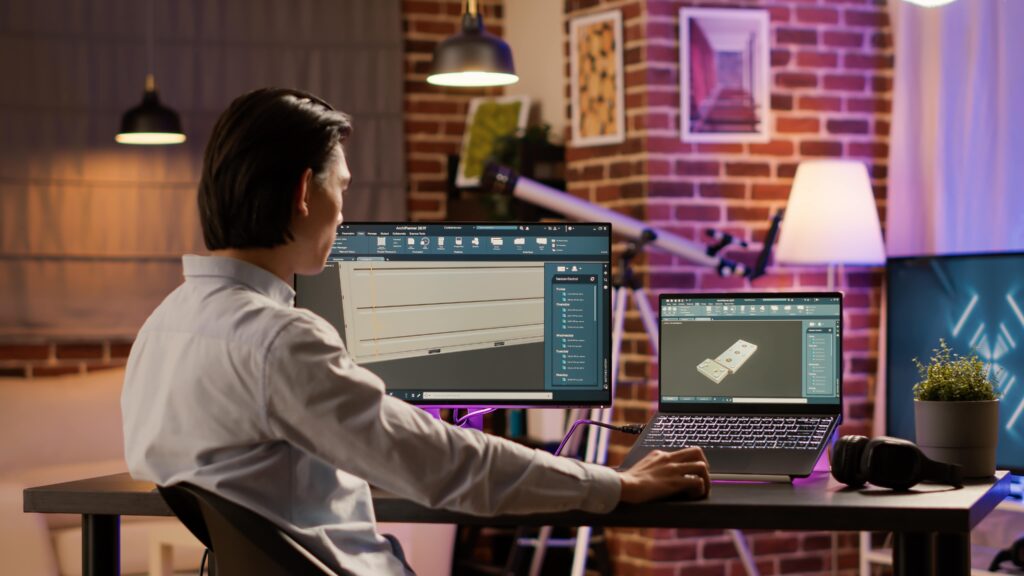Photorealistic lighting plays a crucial role in bringing scenes to life and captivating audiences. Whether it’s a blockbuster film, a video game, or a commercial, the use of advanced lighting techniques can make a significant difference in the overall quality and realism of the final product.
As technology continues to advance, the demand for skilled professionals who can master photorealistic lighting in animation is on the rise. If you’re looking to break into this exciting field or enhance your existing skills, mastering photorealistic lighting techniques is essential.
1. Lighting Artist
Lighting Artists design and implement lighting setups that enhance the mood, atmosphere, and realism of a scene. They collaborate with modelers and texture artists, using tools like Maya and Blender to achieve desired effects. Mastery of light behavior, shading, and rendering techniques is crucial.
2. Visual Effects Artist
Visual Effects (VFX) Artists create photorealistic effects that integrate seamlessly with live-action footage or animations. They use software like After Effects and Nuke, ensuring effects blend naturally with other elements. Proficiency in VFX software and a strong understanding of physics and natural phenomena are essential.
3. 3D Modeler
3D Modelers create detailed models of characters, props, and environments using software like ZBrush and Maya. They collaborate with texture artists and animators, optimizing models for performance while maintaining visual quality. Understanding anatomy and proportion, along with proficiency in 3D modeling, is essential.
4. Texture Artist
Texture Artists create realistic surface textures for 3D models, working closely with modelers and lighting artists. They use software like Substance Painter and Photoshop, ensuring textures enhance the visual fidelity of models. Proficiency in texture creation and understanding material properties are crucial.
5. Compositing Artist
Compositing Artists combine elements like live-action footage, 3D renders, and visual effects into a seamless final image. Using software like Nuke and After Effects, they ensure all components appear integrated. Proficiency in compositing software and understanding color theory are essential.
6. Technical Director
Technical Directors develop tools and workflows to streamline production, solving technical challenges. They use programming skills in languages like Python, ensuring smooth integration of software and tools. Deep understanding of animation pipelines and strong problem-solving skills are essential.
7. Concept Artist
Concept Artists visualize and design characters, environments, and key moments before production. They create detailed sketches and illustrations, working closely with directors to align with the project’s vision. Strong artistic skills and proficiency in digital painting software are crucial.
8. Art Director
Art Directors oversee the visual style and creative direction of a project, ensuring consistency throughout production. They guide concept artists, modelers, and texture artists, maintaining visual quality. Strong leadership and understanding of design principles are essential.
9. Render Wrangler
Render Wranglers manage the rendering process, ensuring timely and high-quality output. They monitor render jobs and troubleshoot issues, optimizing settings for performance. Proficiency in render management software and strong technical skills are crucial.
10. Virtual Reality Developer
Virtual Reality Developers create immersive VR experiences, designing interactive environments for various platforms. They use tools like Unity and Unreal Engine, to stay updated with the latest VR technologies. Proficiency in VR development and an understanding of 3-D modeling and animation are essential.
Conclusion
In the competitive animation industry, mastering photorealistic lighting techniques can set you apart and open up exciting career opportunities. By honing your skills in lighting, shading, rendering, and compositing, you can create visually stunning animations that captivate audiences and bring stories to life. Whether you’re a seasoned professional looking to enhance your skills or a newcomer eager to break into the industry, investing time and effort into mastering photorealistic lighting techniques is a worthwhile endeavor.
Key Takeaways:
- Mastering photorealistic lighting techniques in animation is essential for creating visually stunning and realistic scenes that captivate audiences.
- Roles such as Lighting Artists, Visual Effects Artists, 3D Modelers, Texture Artists, and Compositing Artists all benefit from a deep understanding of photorealistic lighting principles.
- Technical Directors play a crucial role in optimizing rendering pipelines and driving innovation through their knowledge of advanced lighting technologies.
- Concept Artists and Art Directors can effectively convey mood and storytelling elements by incorporating photorealistic lighting into their visual designs.
- Virtual Reality Developers can create immersive experiences by mastering photorealistic lighting techniques to enhance the realism of virtual environments.
To further enhance your skills and advance your career in the animation industry, consider taking the Yellowbrick online course and certificate program, NYU Animation Industry Essentials. This comprehensive program will provide you with the knowledge and practical skills needed to excel in the competitive world of animation. Start your journey towards mastering photorealistic lighting techniques today!








